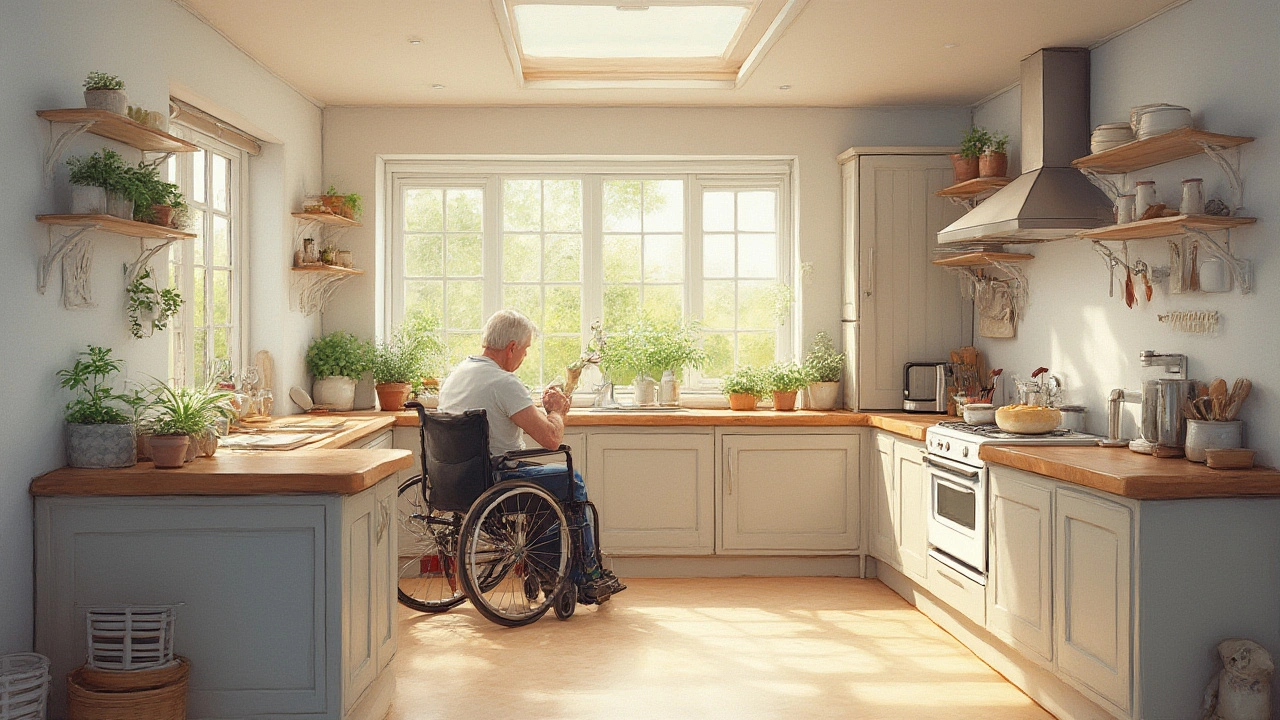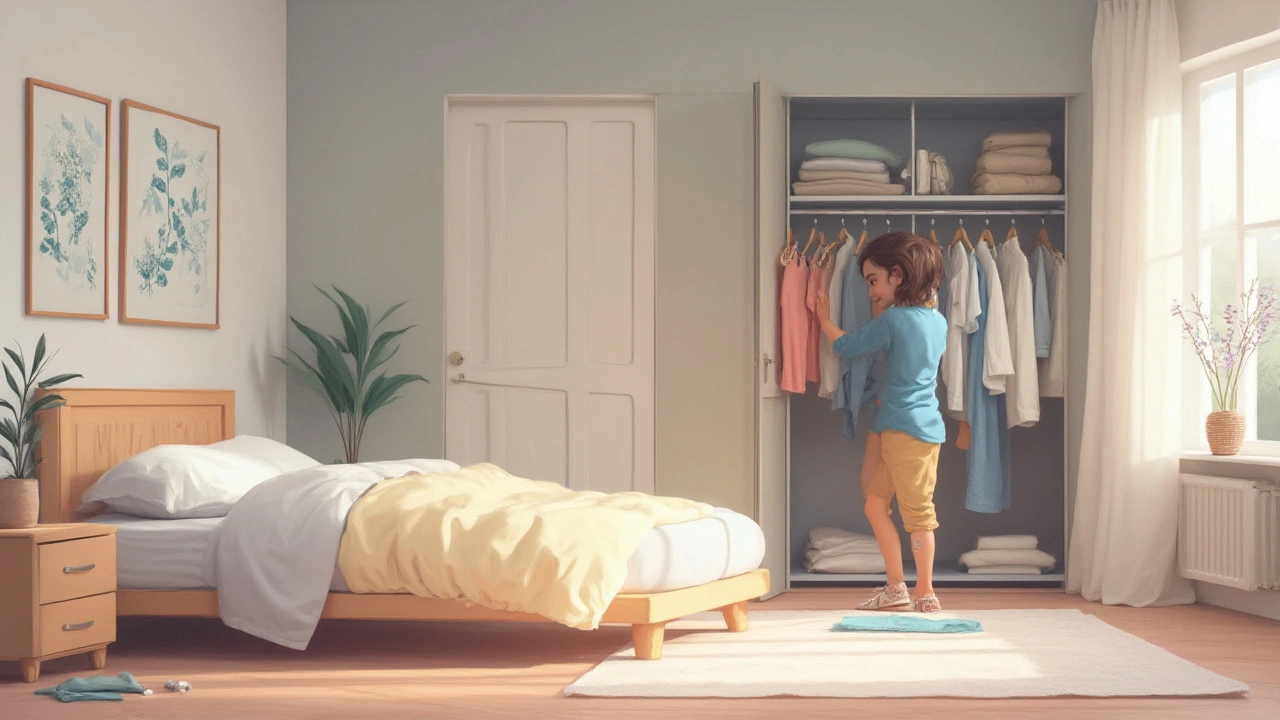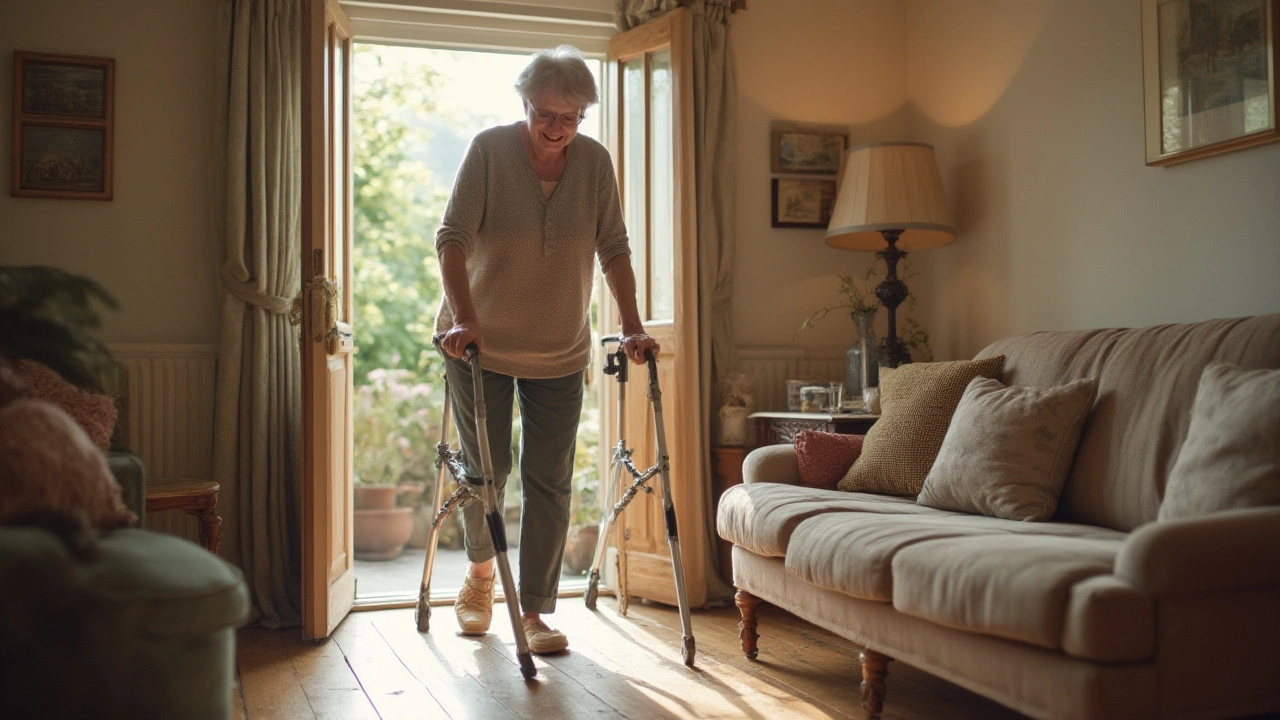Imagine waking up every day and facing a simple task like opening a cupboard or getting up from a chair, only to find it feels like running a marathon. For folks dealing with skeletal muscle conditions—like muscular dystrophy, myasthenia gravis, or even advanced forms of arthritis—ordinary home life turns into a juggling act. But your actual walls and floors can be on your side. Designing a home that’s more comfortable isn’t about fancy gadgets or huge renovations. It’s about making thoughtful tweaks that put less strain on sore muscles and fragile joints. Let’s get into what really makes the biggest difference and why more houses in places like Wellington, New Zealand are being adapted to help people feel at home, not just in a house.
Understanding Skeletal Muscle Conditions in Everyday Life
Most people don’t realize how much we rely on our muscles until getting up, reaching overhead, or even brushing our teeth is a daily struggle. Skeletal muscle conditions aren’t rare; according to the Muscular Dystrophy Association of New Zealand, roughly 1 in 1,000 people are living with muscular dystrophy alone. That’s not even counting the folks with neuromuscular conditions or people recovering from major injuries. What links all these cases is the need for support, both physically and emotionally.
Having weak or painful muscles changes nearly every part of a person’s daily routine. It can make moving from room to room a challenge. Everyday household jobs—cooking, cleaning, laundry—feel like climbing a mountain. And it’s not just about strength. People also deal with fatigue, muscle spasms, and the constant worry of falling. So, when thinking about changes to make at home, it’s less about “making things easy” and more about keeping things safe, manageable, and dignified.
The next time you cook, notice how many times you open cupboards, bend for pots, or reach for that spice jar on the top shelf. For people with muscle conditions, these little moves can cause pain or be downright dangerous, especially if balance is off or grip strength is low. Setting up a comfortable home means looking at all the physical “asks” a house makes—and removing the trickiest hurdles.
Another thing: Skeletal muscle conditions rarely come alone. There’s often a tangle of issues, from poor circulation and pressure sores to anxiety and depression. A comfortable environment isn’t just about ramps and handrails, but about spaces where someone feels relaxed, capable, and connected. Comfort, after all, is a mix of physical ease, mental calm, and independence for as long as possible.
Designing Spaces for Mobility and Independence
Maneuvering a home should not feel like getting around an old, crowded museum, but that’s what it turns into if you don’t plan ahead. When mobility takes a hit, even wide-open spaces can suddenly feel too tight. So what’s the fix? Start simple—clear pathways are table stakes. Keep furniture spaced out so it’s easy to move through rooms with a walker, wheelchair, or cane, and banish any loose rugs that are just waiting to trip someone up. Wellington’s housing stock isn’t known for huge hallways, but clever rearranging really does help.
One striking fact: Falls are the leading cause of injury in Kiwis over 65, and that’s even higher among those with muscle weakness. Clear, wide paths let people move freely without bumping into things or getting caught up in clutter. For people who shift between assistive devices and walking on their own, having a grab bar in the right place—bathroom, by the bed, even in the hallway—can mean the difference between a confident stroll and a dangerous tumble.
Doorways should be wide enough for walkers and wheelchairs, ideally at least 81 cm. Pocket doors and sliding doors can save space, and lever-style handles are far easier to manage than round doorknobs. As a bonus, they work great for both kids and adults who just want life to be a bit easier. And don’t forget thresholds—those little risers between rooms can trip up even the most attentive person, so it’s worth smoothing them out whenever possible.
Most people don’t consider lighting, but it’s huge. Weak muscles often mean slower reactions. Bright LED lighting in halls, entryways, and bathrooms helps people spot hazards fast, especially during those half-asleep midnight bathroom trips. Smart lighting systems, like motion sensors and voice-controlled lights, are another layer of independence.
Independence is also about the right furniture. Look for sturdy chairs with supportive arms, as getting up from a deep or squishy sofa can feel like escaping quicksand. Adjustable beds that can be raised or lowered with the press of a button make mornings and nights far easier. Height-adjustable tables let you find the perfect spot so you’re not hunching or stretching, which is key when your arms and back are already working overtime.
Don’t forget the bathroom—a slippery, cramped place at the best of times. Install a walk-in shower with a built-in bench, non-slip mats, and grab rails. Even little changes, like a hand-held showerhead (so you’re not stretching or standing for too long), make a real difference.
Maybe you’ve got steps up to your home—that’s normal around here, but it can be brutal for someone with muscle fatigue. Modular ramps or threshold bridges aren’t just for permanent wheelchair users. They’re like an insurance policy for anybody dealing with muscle weakness, soreness after surgery, or for when “good days” fluctuate with “bad days.”

Creating Relaxing and Functional Zones
Comfort isn’t only about getting around; it’s about having places in your home where you can unwind and recharge. Skeletal muscle conditions can leave you feeling drained faster than most people think. So, setting up zones for activity and rest is smart.
Think about setting up a cozy corner just for relaxing—a recliner that supports your legs, a cushion or bolster for extra back comfort, decent reading light, and maybe noise-cancelling headphones to cut out neighborhood noise or Wellington’s notorious winds. Calming colors and familiar photos often do more good than you think, making a space feel safe, inviting, and calming after a tough physio session.
Next, look at the kitchen. Arranging the kitchen so the most-used items are between hip and shoulder height means less bending, stretching, and awkward twisting. Pull-out pantries, lazy Susans in cupboards, or wall-mounted racks put things within easy reach. Single-lever taps are simple to use and lower the risk of spills or burns. Many folks also swap heavy old dinnerware for lightweight, easy-grip plates and mugs to avoid strain or accidents at the table.
Home offices and hobby stations need the same ergonomic focus. For anyone still working or passionate about their crafts, ergonomic chairs and adjustable-height desks keep you active but stable. If handwriting is hard, try using voice-to-text on a laptop or keep a big-button keyboard for easier typing. Everyday items—scissors, can openers, even TV remotes—often have adapted, easy-grip versions, widely available in New Zealand’s major retailers. Anything that keeps hands and wrists comfortable is worth considering.
Beds and bathrooms need special thought. For people with night-time cramps or muscle spasms, heated blankets, memory foam mattresses, or body pillows can make a world of difference. Some folks find that fitting blackout curtains and white noise machines help with deep, unbroken sleep because pain often wakes you up. In bathrooms, a raised toilet seat and handrails beside the toilet provide stability and security—it only takes one slip to knock someone’s confidence for weeks.
If you’re bothered by clutter but overwhelmed by the idea of tidying, try open shelves or clear bins so everything is visible. Label things if finding what you need is tricky—might seem obvious, but it really makes a difference for fatigue or brain fog days. If housework gets too much, save your best energy for what matters most, and look into hiring a cleaner for the trickier bits. Nobody has endless batteries, after all.
Using Technology and Community Support for Daily Comfort
Technology isn’t just about the latest gadgets. Even simple tools can give back a lot of independence. Voice-activated assistants (like Amazon Echo or Google Home devices) can turn on lights, read weather updates, play your favorite playlist, or ring family and friends—without needing to get up or fumble with tiny buttons. If hand or arm weakness is an issue, smart plugs and remote-controlled outlets keep you in control of your space with less effort.
Automated medicine dispensers are a lifesaver for anyone with multiple daily meds (which is common with muscle conditions). They beep, light up, or even send reminders to your phone. Some even alert caregivers or loved ones if a dose is missed. And for folks living alone, wearable emergency alarms offer peace of mind. In emergencies, you can call for help simply by pressing a button on your wrist or around your neck, which is a game-changer if a fall leaves you stranded.
There’s a wide range of mobility aids—beyond traditional wheelchairs and walking sticks. Think lightweight rollators with seats (perfect for a quick breather in the garden), reacher-grabbers for picking up dropped items, or even lightweight robotic exoskeleton aids (recently approved for trial in some hospitals in New Zealand) for select patient groups. You don’t need to fill your home with gizmos—just a few well-chosen devices make daily life easier without cluttering up every corner.
But don’t underestimate the human side. The New Zealand healthcare system is surprisingly supportive here, with occupational therapists and physiotherapists available to personalize home adjustments. Reach out to local support groups like MDANZ or Age Concern Wellington—connecting with others is encouraging and often gives you the best real-world tips.
Meal delivery services take the “what’s for dinner” stress out of the day, and plenty now cater to dietary restrictions that sometimes go along with chronic illness. Transport assistance, like Total Mobility taxi cards, frees up more energy for things you actually enjoy doing, not just getting to appointments. Even apps that handle grocery shopping or coordinate house help make it easier to save your effort for the fun stuff, not daily chores.
Family and friends might want to help but not know where to start. Try making a simple “help list” on the fridge or a group messaging app, where folks can sign up to walk the dog, put the bins out, or grab groceries. It means you don’t have to ask constantly, and it keeps things ticking over nicely.

Personalizing Comfort: Little Things Make a Big Difference
No two people’s muscle conditions are identical, so a comfy home is about small, specific tweaks. If you use crutches, storing them upright by the front door means you’re not hunting for them. If muscle cramps hit at odd times, keep a heating pad by your favorite chair with an easy-access plug. Even things like oversized light switches (the “paddle” kind) help if finger grip is fading.
Fresh air is underrated—lots of people with muscle conditions struggle with heat or cold, so good ventilation and a reliable heat pump can help with comfort year-round, which is key in Wellington’s random weather. If you can, get window restrictors so you can leave them open a crack without worrying about safety.
Pets can be wonderful for comfort, but they do add risk, especially if they dart around feet. Pet gates in busy areas or velcro pads on their water bowls (to avoid slippery spills) stop accidents before they happen. Try to keep toys and feeding stations out of main walkways.
Noise and crowds can be overwhelming if you’re already feeling tired or sore. Consider setting up a “quiet room” away from common distractions—good for afternoon naps or just a place to escape during busy family get-togethers.
Don’t overlook mental comfort, too. Regular chats with a neighbor or community group are as important as a comfy armchair. If getting out is tough, invite friends over for coffee or a movie night. Even virtual catch-ups work wonders for mood and motivation.
Staying organized is easier with reminders—on your phone, a sticky note, or a wall planner. On tough days, visual reminders cut through brain fog, helping you keep track of appointments, meds, and to-dos without extra stress.
Little indulgences—like an extra-fluffy robe, favorite music, or a snack stash in easy reach—make a house feel like yours, not just a set of requirements and checklists. Ask for feedback and ideas if you’re living with someone with a muscle disorder; they often have smart workarounds that you or a builder might not think of.
At the core, comfort at home isn’t about expensive overhauls or having every possible gadget. It’s about smart, personal tweaks that offer more skeletal muscle conditions support and freedom every day. The combination of practical design, some clever technology, and a caring community can turn any space into a place where people with skeletal muscle challenges can truly relax, recharge, and keep living life on their terms.

